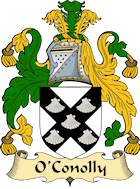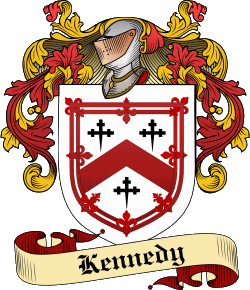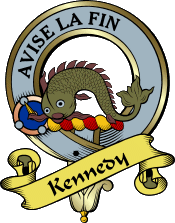|
|
Search

|
  Home Home
|
  Surname Surname
|
  First Name First Name
|
Popular Products

|
  Coat of Arms Coat of Arms
|
  Clan Badges Clan Badges
|
  Books & Gifts Books & Gifts
|
  Celtic Jewelry Celtic Jewelry
|
  Black Shirts Black Shirts
|
  CD Music CD Music
|
  Download Download
|
 Design Gallery
Design Gallery

|
  Irish Irish
|
  Flags Flags
|
  Celtic Celtic
|
  Tartans Tartans
|
  Scottish Scottish
|
  Claddagh Claddagh
|
  Surnames Surnames
|
  Highlander Highlander
|
  Celtic Radio Celtic Radio
|
Research

|
  History History
|
  Country Country
|
  Families Families
|
|
|
|
|
 We produce shirts for clans, organizations or websites! Expediated manufacturing and shipping is available for an additional charge. Our ever growing selections of designs includes family Coat of Arms, Scottish Clan Badges, Irish Claddagh Badges, Flags, Tartans, Surnames, Celtic, Irish and Scottish designs. Please contact us for a custom quote on bulk orders.
|
|
Our Heraldry Database has thousands of Family histories to search. Visit Now!
O'Conolly

Coat of Arms
Owing to the lack of precision frequently found in the anglicization of Gaelic surnames due to the fact that their English forms were often determined by the phonetic attempts of lawyers and others in the seventeenth century who were unfamiliar with the Irish language, the name Connolly has been much confused with Conneely and Killealy. The people now called Connolly mostly derive their descent fr.....
|
|
|
Heraldry Database: Kennedy
Kennedy

|
|


Surname: Kennedy
Branch: Kennedy
Origins: Scottish
More Info: Scotland
|
|
Background: The Kennedy Clan was strong and powerful, dominating southwestern Scotland for centuries. They were astute enough to support the strong Scottish kings and to oppose the weak ones. This support enabled them to retain their lands and position and to expand them, sometimes at the expense of their neighboring clans. At the time of the Reformation in the 1500s, a schism developed within the Kennedys when one faction (Bargany) favored Henry VIII’s Reformation and the other side of the clan (Cassillis) favored remaining loyal to Rome. Long after the Cassillis branch embraced John Knox and Protestantism, the split remained, resulting in disputes after every clan chief’s death over who should succeed and lead the clan. The issue finally was resolved in favor of the Cassillis branch, and the title of Marquess of Ailsa is passed down through that side of the family today.
|
 Motto: Motto: Avise la fin, Consider the End. Arms: Argent, a chevron Gules between three cross crosslets fitchee Sable, all within a double tressure flory counter-flory Gules. Crest: A dolphin naiant Proper. Supporters: Two swans Proper, beaked and membered Gules. Plant: Oak. View the Heraldry Dictionary for help.

This name comes from the old Irish Gaelic, ‘cinneidigh’, literary meaning ‘ugly headed’. The family came from Ireland to Celtic Dalriada, now Strathclyde, but are mainly associated with the district of Carrick in Ayrshire. They claimed descent from the Earls of Carrick and kinship to the Bruce family, whom they supported against the Comyns and throughout the War of Independence.
John Kennedy of Dunure acquired lands at Cassillis about 1360, and witnessed a charter by Robert II in 1384. His son, Sir Gilbert, was one of the hostages for the release of David II by the English in 1357. Gilbert’s son, James, married Princess Mary, second daughter of Robert III. Their son, another Gilbert, was created Lord Kennedy in about 1457 and was one of the six regents during the minority of James III. A brother of the first Lord Kennedy, James Kennedy, was one of Scotland’s best-loved bishops. He served briefly as High Chancellor of Scotland and was Bishop of Dunkeld, and later Archbishop of St Andrews. At St Andrews he founded St Salvator’s College in 1455.
Hugh Kennedy of Ardstinchar served as commander of the Scots mercenary troops who fought for Joan of Arc at the siege of Orleans; hence Joan figures on the arms of Kennedy of Bargany. Sir David, third Lord Kennedy, was created Earl of Cassillis in 1509 and died at Flodden in 1513. The second Earl was murdered in 1527. Gilbert, third Earl, was one of four Scottish commissioners who were poisoned at Dieppe on their return from the marriage of Mary, Queen of Scots to the Dauphin in 1558. He had inherited his title at the age of twelve when one of his first acts was to sign, under duress, the death warrant of Patrick Hamilton, the first Scottish Protestant martyr. The fourth Earl earned an infamous reputation by ‘roasting’ Alan Stewart, Abbot of Crossraguel, in the black vault of Dunmore in order to obtain tracts of abbey land.
The sixth Earl of Cassillis, John, was Lord Justice General of Scotland from 1649 to 1651. He was a zealous Protestant, as was his son, the seventh Earl, and both were firm supporters of Parliament during the civil war. The Justice General sat in Cromwell’s House of Lords. They suffered for their beliefs, but their estates remained largely intact. When the eighth Earl died without heirs there was a three-year court dispute to determine the succession. The House of Lords finally found in favour of Sir Thomas Kennedy of Culzean in preference to William, Earl of March and Ruglan. Sir Thomas’s brother, David, an advocate, succeeded him in 1775 as tenth Earl, and was an active improver. He commissioned the architect Robert Adam to build the castle at Culzean, considered to be Adam’s masterpiece.
On the death of the tenth Earl the title passed to a kinsman who had settled in America. Captain Archibald Kennedy was an officer in the Royal Navy who held estates in Hoboken in New Jersey and became the greatest property owner in New York. He tried to be neutral during the American War of Independence, and was accordingly mistrusted by both sides. Half of his New York properties were confiscated, including number 1, Broadway, which was appropriated by George Washington. His son, the twelfth Earl, was a close friend of the Duke of Clarence, who, on his coronation as William IV, created him Marquess of Ailsa. The second Marquess, Archibald Kennedy, was killed in a hunting accident in 1870. His son succeeded to the title at the age of twenty-two, and after his death in 1938 the family title was borne by each of his three sons in turn.
The Kennedys of Kermuck were hereditary constables of Aberdeen from at least 1413. The family was outlawed in 1652, when the father and son of the family mortally wounded John Forbes of Watertown in a fracas. The family first went to Stroma in the Pentland Firth and eventually to Burry in Orkney. Some then served with the Hudson Bay Company. Captain William Kennedy, who was part Cree Indian, led an expedition to search for Sir John Franklin, the explorer seeking the Northwest Passage between the Atlantic and Pacific Oceans. Franklin’s frozen remains were only found in the latter part of the twentieth century.
The Moray Kennedys came north with the possession of the earldom of Moray by Janet Kennedy and her son by James IV. She was sister to the third Lord Kennedy. The Clan Ulric in Lochaber are said by tradition to be descended from Ulric Kennedy, who had fled from Ayrshire because of his lawlessness. These Kennedys became a sept of the Camerons. Lieutenant General Sir Clark Kennedy of Knockgray served throughout the Peninsular War. At Waterloo in 1815, he was in command of the centre squadron of the Royal Dragoons and personally captured the eagle and colours of the 105th Regiment of French Infantry. His arms were augmented to incorporate these honours with the word, ‘Waterloo’. The fifth Marquess presented Culzean Castle to the National Trust, but the chiefs still live on family land in Ayrshire.
Name Variations: Holmes, Cassilis, Cassells, Cassellis, Cassillis, Cassils, Cassels, Carrik, Carrick, Carric, Carryk, Karryc, Karrick, Kinnedi, Canedie, Kennyde, Kennadee, Kenide, Kennedy, Keneidy, Kennydy, Kennedi, Kenede, Kenadie, Kennaty, Kennatie, Kenyde, Kanydi, Kenedy, Kennety, Kennedye, Kennide, Kinydy, Kennetie, Kanide, Kynidy, Kyneidy, Maccuaraig, Macolrig, Macoulric, Macourlic, Macualraig, Macuaraig, Maculrig, Maculricm, Maculrick, Maculrich, Macwalrick, Makoolrik, Maccualraig.
References:One or more of the following publications has been referenced for this article.The General Armory; Sir Bernard Burke - 1842.
A Handbook of Mottoes; C.N. Elvin - 1860.
Scottish Clans and Tartans; Neil Grant - 2000.
Scottish Clan and Family Encyclopedia; George Way of Plean and Romilly Squire - 1994.
Scottish Clans and Tartans; Ian Grimble - 1973.
World Tartans; Iain Zaczek - 2001.
Clans and Families of Scotland; Alexander Fulton - 1991.





Sign-up for a Founders account and receive personalized
family heraldry service and much more!

Want to know more?
Click the Heart!
|
|
|



